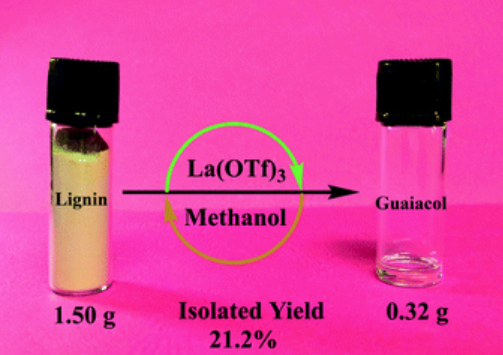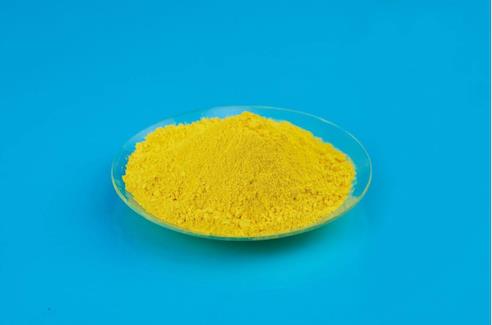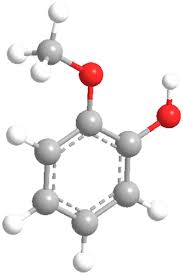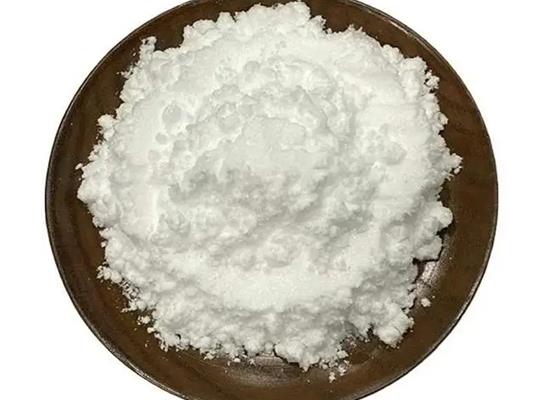An important raw material: Guaiacol
Description
One main component of the resin of Guaiacum is 2-methoxyphenol (trivial name: guaiacol), which was extracted for the first time via distillation as a pure substance in 1829 by Otto Unverdorben (Unverdorben, 1829). Different species of the genus Guaiacum produce the resin; the most common are G. officinale and G. sanctum. The name Guaiacum can be traced back to the indigenous people term for the plant of the Zygophyllaceae family, Zygophyllaceae family, which grows in Middle- and South America[1].
Guaiacol and its derivatives are commonly found in nature and are known for their smoky, clove-like, and vanilla-like smells.
Uses
In the chemical industry, guaiacol is considered an important raw material for the synthesis of many value-added chemicals, such as spices (vanillin, veratraldehyde, and eugenol), pesticides, drugs (eugenol, potassium guaiacolsulfonate, guaifenesin, berberine, and isoprenaline), a plant growth regulator (2-methoxy-5-nitrophenol sodium salt) and so on. Based on a global market survey, the demand for the above high-value chemicals increases yearly. Typically, the annual demand for guaifenesin, vanillin, and eugenol is 37,000, 16,000, and 7300 t per year, all of which may be synthesized from guaiacol. Therefore, the demand for guaiacol is large[2].
Synthesis method

However, the current production of guaiacol is mainly based on the methylation of catechol, an expensive downstream chemical from fossil resources. Additional methylation reagents, such as methanol and methyl chloride, use lignin as a cheap and renewable feedstock to selectively produce guaiacol, wh. Although it has great potential, it is challenging because of its heterogeneity and inert reactivity. Guaiacol can be selectively produced from lignin using LeOTf)3 as a catalyst in catalyst methanol/water solvent. The yieguaiacol reached 25.5 wt%, and the remaining residue is solid. As a catalytic system, La(OTf)3 efficiently catalyzed the hydrolysis of ether linkages in lignin to form alkyl-syringol and alkyl-guaiacol products. Aiacol products underwent decarbonization to produce guaiacol, while alkyl-syringol was transformed into guaiacol via decarbonization and demethoxylation. In the scale-up experiment, 0.32 g of guaiacol can be obtained from 1.50 g lignin, and the residue is solid.
References
[1] Maria Schranz . “Influence of the chemical structure on the odor qualities and odor thresholds of guaiacol-derived odorants, Part 1: Alkylated, alkenylated and methoxylated derivatives.” Food Chemistry 232 (2017): Pages 808-819.
[2] Shen, Xiaojun et al. “Selective catalytic transformation of lignin with guaiacol as the only liquid product†.” Chemical Science 5 (2019): 1347–1352.
You may like
Related articles And Qustion
Lastest Price from Guaiacol manufacturers

US $0.00/kg2025-09-10
- CAS:
- 90-05-1
- Min. Order:
- 1kg
- Purity:
- 99%min
- Supply Ability:
- 20tons

US $0.00/kg2025-05-15
- CAS:
- 90-05-1
- Min. Order:
- 1kg
- Purity:
- 99%
- Supply Ability:
- 10000KGS





